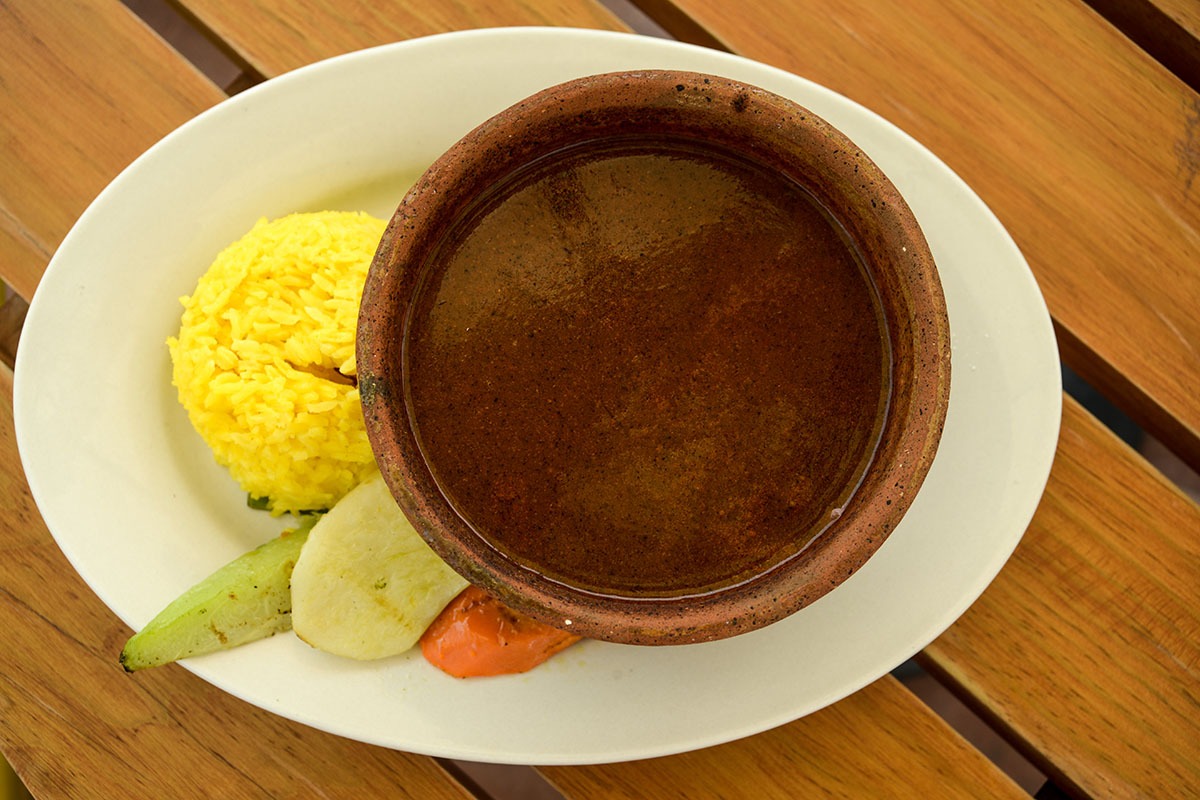Welcome to Guatemala! We love to eat… and we eat well.
Here are a few of Qué Pasa‘s recommendations for delicacies that you need to try during your visit.
Enjoy some Rosa de Jamaica
Rosa de Jamaica, known as Hibiscus sabdariffa L. in Latin, is a bushy annual plant known for its fragrant, blood-red calyces (commonly mistaken as flowers or petals) – the covering that protects its seeds. When boiled in water, the calyces turn the water a deep purple color, almost to the point of being black, and this liquid is packed with vitamin C as well as calcium. You can drink this liquid hot with a drizzle of honey, or this time of year when it’s hot out, sweeten the infusion with sugar to taste, chill, and then pour over ice for a refreshing thirst quencher.
Long live Chocolate!
Regardless of the form it’s enjoyed in, most people delight in all manner of chocolate-related goodies. Guatemalans certainly find it delicious. And why not? Guatemala is one of the most renowned producers of cocoa worldwide, each year producing a little over a thousand tons of cocoa (or cacao, as it’s known in Spanish). The varieties of cocoa beans from Guatemala (and other countries in Central America), known as Cacao Criollo and Cacao Trinitario, are considered some of the finest and best-tasting. While you’re here in the cacao heartland, make sure to try some chocolate chapín!
You need Coffee
Coffee: it’s one of Guatemala’s finest products, and for many chapines, it’s the favorite flavor in the morning and the most pleasurable pastime of the afternoon. It’s a big part of life in Guatemala, not just as a drink, but as a source of jobs for many, and wealth for some. It’s a part of this country’s past and present, and it will surely be part of its future. Coffee shrubs push their way up through rich, volcanic soil all over Guatemala and have earned this country a reputation for producing some of the very best coffee beans in the world. Time spent here would not be complete without a leisurely pause in a fabulous café, sipping a delicious cup of concentrated goodness.
Spices, herbs, and seeds in the famous Pepián
There are some dishes so special that Guatemala’s government granted them recognition in 2007; they’re recognized as being part of the Intangible Cultural Heritage of the Nation. These dishes include pepián (in its two versions: black and red), originally from the Guatemalan Highlands – which includes La Antigua. The dish’s strong influence in the city is obvious by its prominent position on many restaurants’ menus, and of course, it’s made in quite a few Antigüeño homes.
Tamales on Saturday
The Guatemalan tamal is an extraordinary blend of flavors. Unlike the Mexican term that ends with an “e” which many English speakers have learned, in Guatemala the dish is called a tamal (the plural is tamales), and it’s a delight for the palate. It not only satisfies the appetite, but it also has a history that dates back to the earliest days of Mayan culture. There are many varieties of tamales – not only in Guatemala but throughout Latin America – but in this country, the most common are tamales colorados (“red tamales” with a tomato-based sauce) and tamales negros (“black tamales” which are sweet because chocolate is used in making the sauce).


